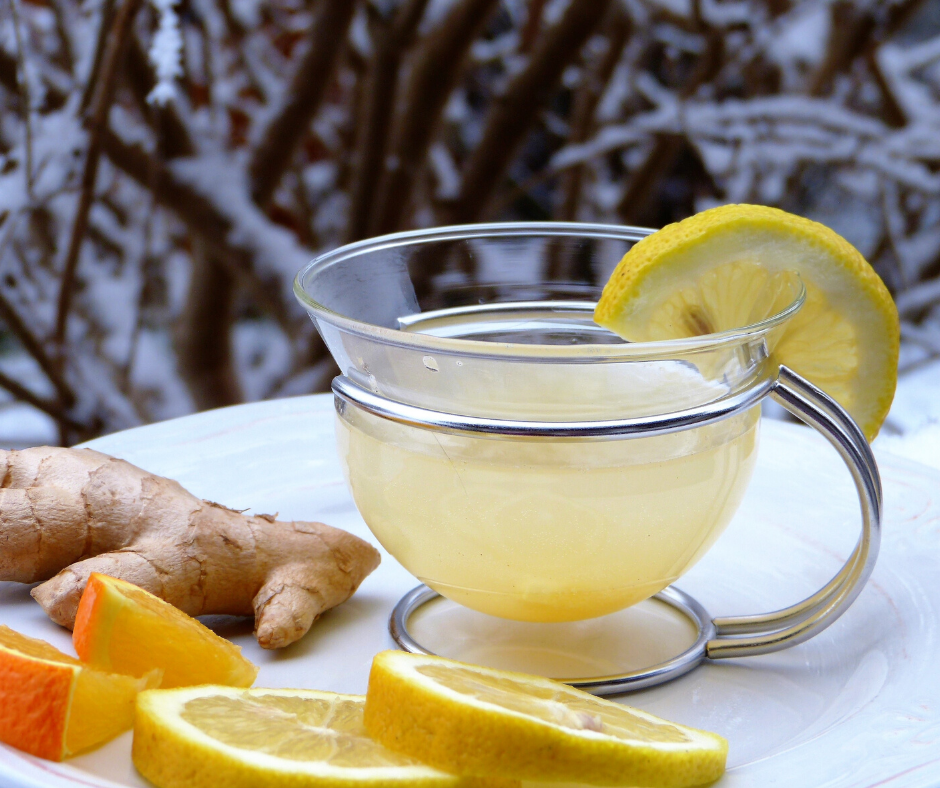|
As Seen in Home Herbalist Magazine - Fall 2019 Autumn perhaps my favorite season: colored leaves and crisp mornings that warm into sunny afternoons. Fall heralds change as long summer days leave us behind. At this time of year, I often look forward to warm root stews, spicy herbal drinks, apples crisp with freshness, and story-filled autumnal bonfires. For many of us, the luxury of fully enjoying the shifting season is interrupted by the commotion of our daily lives. This is a busy time at work or school, often spent indoors with coworkers and classmates, and as such, it is also the beginning of the flu and cold season due to increased exposure. With this being said, I could not think of a better question than the one that came to me from Arlene White from Issaquah, Washington, who writes: “I am a mother of four school-aged children. Starting in September, it seems as though everyone takes turns getting sick with the flu. Is there anything I can do naturally to help prevent it?” In my opinion yes, there are plenty of things that can be done naturally to prevent and shorten the duration of the flu. I imagine this question concerns many people following last year’s flu epidemic, but before I answer, allow me to state the following: I am not a Doctor, nor are any of the suggestions or recommendations I am about to make meant to be a substitute for advice from your MD, or as a substitute for any prescriptions you may be taking. Any suggestions followed will be the responsibility of the reader, and are stated with the intention of interest and education only. If you have a health issue, please see your primary care physician first and foremost. With that out of the way, let’s talk a little bit about the flu itself, what it is, how it affects the body, and how herbs, together with our immune system, can help prevent the flu and keep us healthy. The Flu – General Info: The influenza virus, also known as “the flu,” is a highly contagious viral infection that primarily affects the upper respiratory tract. In actuality, the flu has two designated types, these being type A (more aggressive), and type B (considered more mild), that cause the acute infection with which we are all rather well acquainted. Within these two types, there are many different strains (in some cases up to 200). These acute, systemic viral infections are considered seasonal, and since they are living viruses, they adapt to their environments and change each year, which is why, at times, treatments for the flu that worked one year might not work the next. This is because of the changes in the glycoproteins on the surface of the virus, which can change the variable intensity each year, or rather, a full genetic shift in the virus itself can take place. The most common complication of influenza is pneumonia. This can be viral pneumonia, in which the influenza virus itself spreads into the lungs, or bacterial pneumonia, in which unrelated bacteria attack a person’s weakened defenses. There are three main ways people catch influenza, which include:
Because of these three types of transmission, influenza can be transmitted very easily. As such, the Center for Disease Control (CDC) recommends that persons with influenza wear surgical masks in public to prevent transmission to susceptible individuals. Those most seriously impacted by the flu are the elderly, those with corresponding medical conditions, pregnant women, and the very young. Symptoms of the Flu: Symptoms of the flu can vary greatly, but generally an individual may experience some or all of the following:
Because most people are familiar with the symptoms of influenza, and because it occurs in epidemics, the illness is often correctly diagnosed by the person who has it, or by friends and family members, however, please visit your doctor if complications arise. Know When It’s an Emergency: Although the flu is common, it can still cause an emergency situation. Herbs are very powerful healers, but they may not be the best choice in an acute emergency situation. With that said, know the warning signs, and if any of the following signs are taking place, seek medical help right away. In Children:
Herbal Approach to the Flu: Perhaps the only good thing about the flu is that, in botanical medicine, we have a plethora of readily available herbs to choose from to help prevent and ease the severity of the flu. When seeing a client with the flu, I generally like to consider the following actions to assist the immune system, lessen symptoms, and help the body in quickly recovering from the viral infection. Actions such as immune stimulants, immune-modulators, anti-bacterial, anti-viral, adaptogenic, lymphatic, diaphoretic, antimicrobial, soothing expectorant, antispasmodic, broncho-dilators, vasodilators, lung tonics, gentle sedatives, demulcents, astringents, and anti-catarrh are all actions that are pertinent when attempting to ease the flu. However, with all of these fantastic herbal allies at our disposal, I believe that prevention is best. Though it is not always achieved, when we start planning ahead for the flu and cold season, we can give our immune systems additional assistance in combating this nasty seasonal virus. A great way to assist in prevention is to use herbs daily to bolster the immune system, but it’s also important to pair this with a healthy diet rich in nutritious, non-processed foods that are low in sugars. Additionally, I think a good daily multi-vitamin supplement (take care to read the labels, not all products are created equal), proper exercise, and exposure to the outdoors keep the immune system strong. Keep in mind, a chronically motionless body is a body that can stagnate and be more susceptible to illness. Early fall and early winter is a great time to start your preventative care regime. When suggesting a preventative protocol, I generally like to suggest the following herbal actions:
Elderberry/Elderflower: The berries are considered to be anti-inflammatory, diaphoretic, and are specific for flus and colds. The flowers are considered to be a gentle stimulant, anti-inflammatory, and specific for bolstering the immune system. Echinacea: Considered to be a general tonic, immune modulator and immuno stimulant, gentle lymphatic, antiseptic, antimicrobial, antibacterial, anti-viral, detoxifier and by some a gentle bitter. Though it is often used to battle colds and flus, it is, in my opinion, best used before the onset of illness to bolster the immune system as a whole. Astragalus: Considered an adaptogenic herb, it is an antioxidant, immune stimulant, immuno modulator, anti-viral, and anti-bacterial herb. It is considered to be a warming tonic herb that stimulates the immune system and improves immune resistance and resistance to stressors. It can be used during colds and flus, however, do not use in the presence of a high fever. Nettle: Nettle is an herbal ally for so many different situations. When it comes to the flu or flu prevention, it is a tonic, antiseptic, blood tonic and cleanser, detoxifier, and is considered a nutritive due to its vitamin and mineral content. It strengthens and supports the whole body, but also acts gently upon the lymphatic system, immune system, the liver, and circulatory system, all of which support proper body function and elimination. Reishi: Considered a general tonic, adaptogen, immune stimulant, anti-bacterial, anti-viral, detoxofier, and a gentle liver stimulant. It is regarded as a very safe herb that promotes full systemic well-being, and is specific in cases of infections and illness where the immune system may have been weakened. Thyme: A tonic and antioxidant, it is considered to be antiseptic, anti-microbial, anti-bacterial, anti-viral, and a gentle digestive. It is an herb that can be used for prevention, but also for acute infection. Thyme is excellent in cases of the flu, especially when upper respiratory infection is present. It is considered a stimulating tonic during illness, and is specific for cold and flu, not to mention it tastes amazing in a broth and is a great example of a powerful food herb. Goldenrod: Goldenrod is a beautiful looking herb with its golden crown of tiny soft flowers. In uses of prevention, it is an anti-oxidant, anti-microbial, antiseptic, and gentle liver stimulant. Generally, it is used for issues with the nose, throat and respiratory tract. Commonly, it is used in cases of sinus infection, and is specific to the flu. A wonderful thing about medicinal herbs is that some of our most tried and true allies are also delicious, and so, I could not in good conscience speak about herbs associated with flu prevention and not mention two of our most common food based herbs: onions and garlic. These are strong antimicrobial, anti-bacterial, and anti-viral herbs that can be used daily to help support the immune system and body as a whole; they can also be used during the acute stages of the flu. I find the most enjoyable way to do this is by means of a broth that can be taken three times daily. And so, as I leave you with this recipe, I send you many well wishes for the shifting of the seasons. In health and wellness, Petra Simple System Support Broth: Ingredients: - 1 container organic chicken or vegetable broth base (946ml) - 1 full bulb garlic cloves, peeled and cut in half - 2 large or 4 small onions, peeled and cut in quarters - 3 tablespoons dried thyme - ¼ teaspoon cayenne pepper (optional) Directions: Bring all ingredients to a very gentle simmer for 20 minutes. Let steep an additional 15 minutes off the heat, strain and save broth. Drink one cup warm broth three to four times daily, add salt or pepper to taste. Sit back and enjoy the changing of the season. References:
0 Comments
|
Petra Sovcov is not a Medical Doctor (MD) nor a Naturopath (ND), she is a Clinical Herbal Therapist (CHT) and holds a Doctorate in Natural Medicine (DNM). The suggestions or recommendations made on this site are not meant to be a substitute for advice from your MD, or as a substitute for any prescriptions you may be taking. Suggestions followed will be the responsibility of the reader, and are stated with the intention of interest and education only. If you have a health issue, please see your primary care physician (MD) first and foremost. Categories
All
Archives
July 2024
|


 RSS Feed
RSS Feed